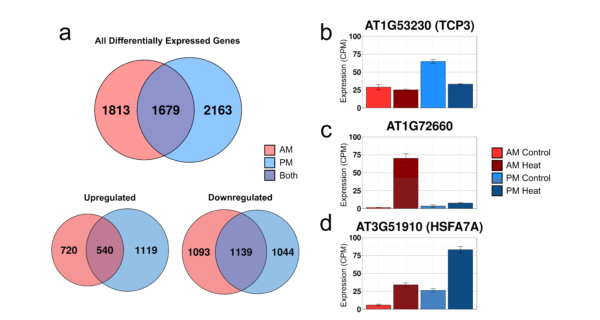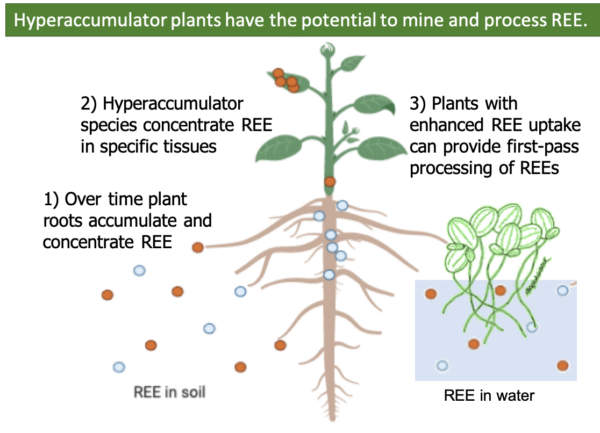Our Approach
Our lab relies on the integration of interdisciplinary techniques to answer questions related to the circadian clock, temperature, and phytochemical composition. We use biochemistry, genetics, molecular, photonic, and bioinformatic tools to understand plant responses at the intersection of stress and time of day. Diversifying our lab with specializations in these fields allows us to understand and complement the limitations of each. For example, we can combine molecular biology and photonics to assay real-time changes in transcriptional regulation within live plants using a firefly luciferase reporter and a Raptor Eagle V 4240 camera that is most commonly used to image stars.
Temperatures and Time of Day 
One of our lab’s main focuses is understanding the importance of temperature and time of day to plant’s quality and productivity. Surprisingly, if you give the same plant the same heat stress at two different times of day you get differences in the tolerance to the heat. These differences are reflected in the transcriptional response at different times of day. By using the difference in the transcriptional response and the phenotype in the same plant genotype we can use this variation to map the underlying connections between transcriptional responses and phenotypic outcomes.
High Nighttime Temperatures
Temperatures are rising faster now than ever before. Plants have evolved over millions of years by adapting to incremental changes in their environment. How will plants respond to the rapidity of current temperature changes? Temperature fluctuations between the high temperatures of day and low temperatures at night are known to be key entrainment factors in the plant’s daily rhythms. These rhythms affect much of the plant’s life; from growth and development, reproduction, and even composition. The daily change in temperature is decreasing on average as night temperatures are increasing faster than day temperatures, reducing the amplitude of cyclic temperature plants experience. Our lab is beginning to explore the consequences of rising night temperatures on agriculture focusing on both staple crops and quality of specialty crops such as rice and hops, respectively. (Photo by Cristian Lozan on Unsplash).
Plant Biominers
Advanced technology and clean energy economies require advanced materials. These advanced materials include hard to acquire elements like lithium or rare earth elements. Current mining approaches for acquiring these elements are environmentally damaging and costly. Our Plant Biominers project is developing plants with enhanced uptake of targeted elements.
Plants in Space
We are working with NASA to understand the effects of zero-gravity on root development. This research will be used to grow plants in space. Stay tuned for updates as this project continues to grow and develop. (Photo by NASA on Unsplash).
Interested in our research?
Find out more about individual projects in the research drop-down menu or browse our publications.



